Top 10 Art Pieces in Rome for the Christian Traveler
By Jennifer Bartlett
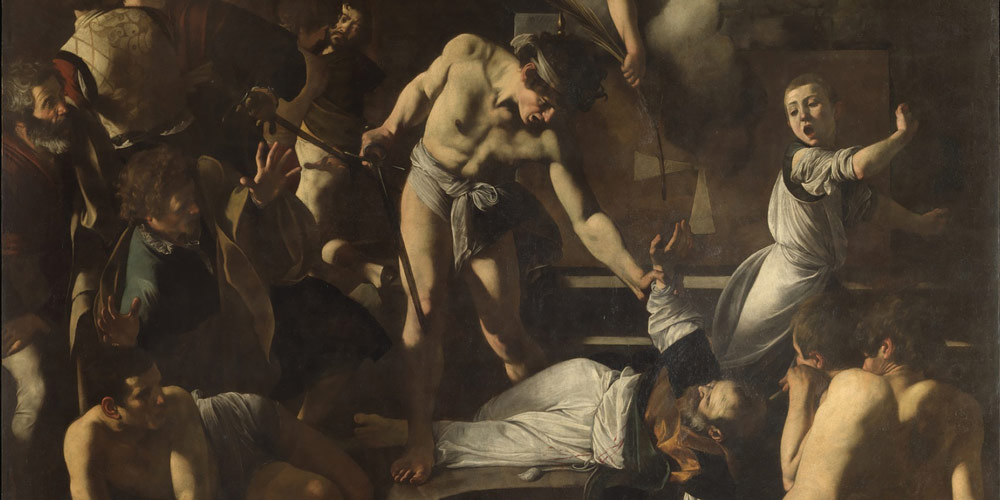
Biblical Art Pieces by Michelangelo Merisi da Caravaggio
Rome is a cornucopia of biblical art. It can be faith-building to see skillful depictions of our early brothers and sisters, as outlined in The Word. Guests on one of our Bible-based Christian cruises have the option to purchase an extension to Rome and to gain deeper insight into the world of the Early Church, as these works of art provide. Below is our list of the Top 10 works of art located in museums around the city that are related to the New Testament. All of these pieces were painted by Michelangelo Merisi da Caravaggio, a 16th– and 17th-century Baroque Italian artist.
1. The Martyrdom of Saint Matthew
San Luigi dei Francesi (Church of St. Louis of the French)
This painting was completed in 1600 and was the first of the three Matthew paintings to be installed in the Contarelli Chapel of the San Luigi Church. This painting depicts Matthew being killed by a soldier, as commissioned by the king of Ethiopia. It is believed that the King lusted after his own niece, a nun, and was rebuked by Matthew. The cardinal of the Contarelli Chapel had explicitly described what he wanted to see depicted in the painting.
2. The Calling of Saint Matthew
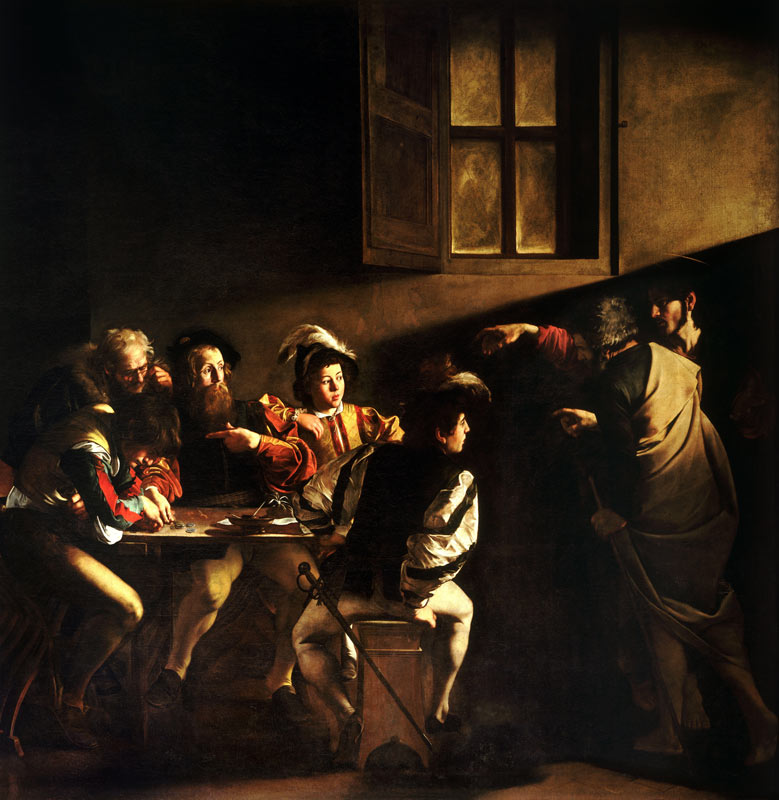
San Luigi dei Francesi
This painting, also completed in 1600 for the Contarelli Chapel, portrays the encounter between Matthew and Jesus in Matthew 9:9:
As Jesus passed on from there, he saw a man called Matthew sitting at the tax booth, and he said to him, “Follow me.” And he rose and followed him.
The Holy Bible: English Standard Version (Wheaton, IL: Crossway Bibles, 2016), Mt 9:9.
3. Inspiration of Saint Matthew
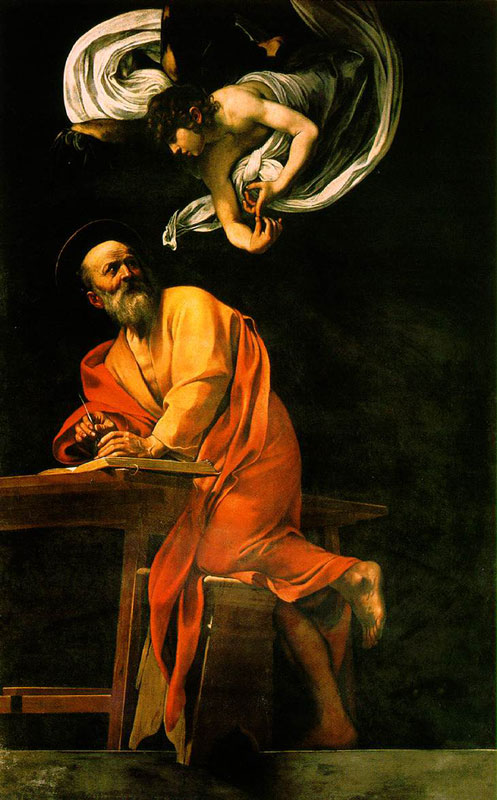
San Luigi dei Francesi
The third canvas depicting the plight of Matthew hangs alongside the Martyrdom of Saint Matthew and the Calling of Saint Matthew in the same Roman church. Completed in 1602, this painting depicts Matthew at a writing desk while an angel descends from above.
4. Boy with a Basket of Fruit
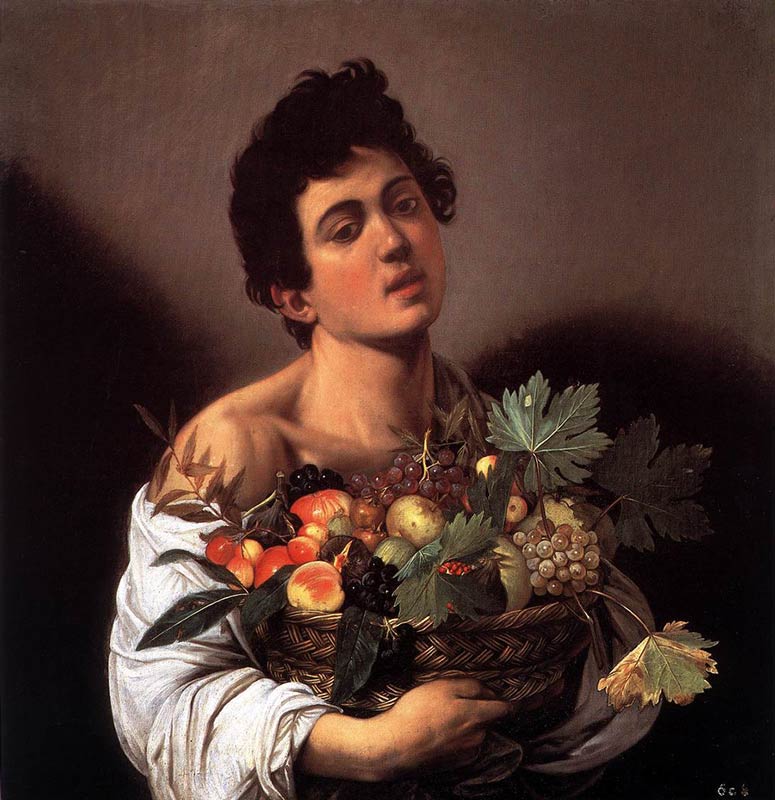
Borghese Museum
This painting is currently housed in the Galleria Borghese in Rome. Originally painted in 1593, Caravaggio used his friend, another painter, 16-year-old Mario Minniti as a model.
5. David with the Head of Goliath
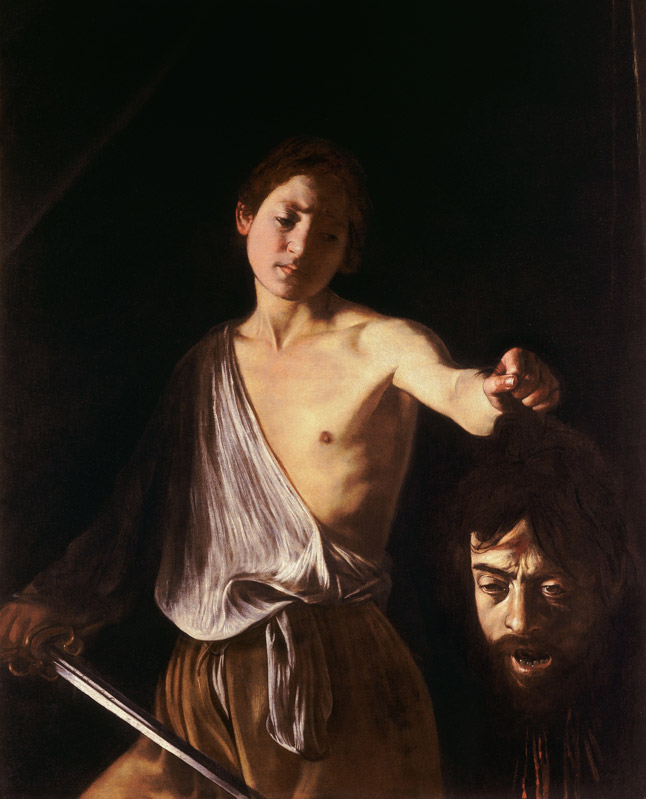
Borghese Museum
Also housed in the Galleria Borghese in Rome, this work, painted in 1610, illustrates the well-known story of David’s courage in battle and the power of good over evil. For many, David represents Christ and Goliath embodies a defeated Satan.
6. The Fortune Teller

Capitoline Museum
Although most of Caravaggio’s work centered on biblical representation, this painting is important as it depicts a life lived in a secular world. There are two versions of this painting exist: the first, painted in 1594, hangs in the Capitoline Museum in Rome; the second, completed in 1595, is on display in the Louvre in Paris. This painting is only one of two paintings completed by Caravaggio to be considered a genre piece.
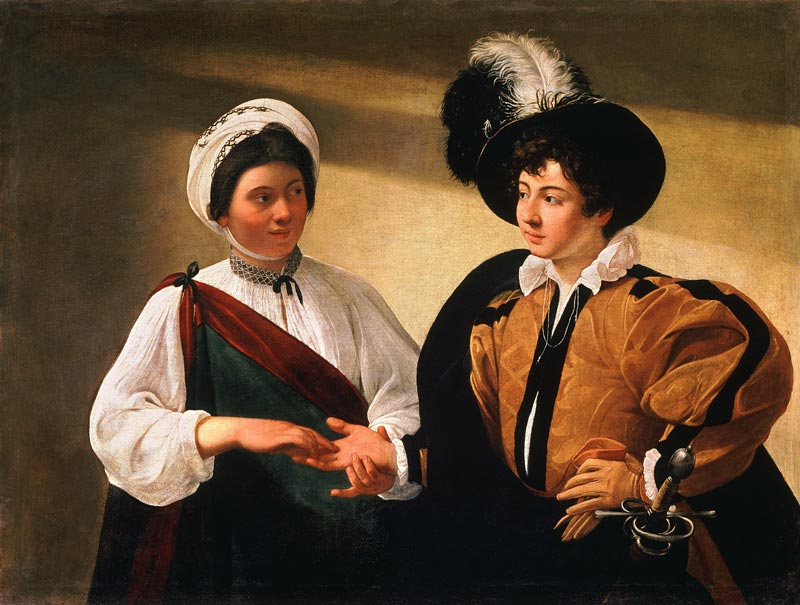
7. John the Baptist (Youth with a Ram)
Capitoline Museum
Completed in 1602, this painting depicts a young John the Baptist resting on a red cloak while clutching the head of a Ram. This painting, like The Fortune Teller, can be found in the Capitoline Museum in Rome.
8. Conversion on the Way to Damascus
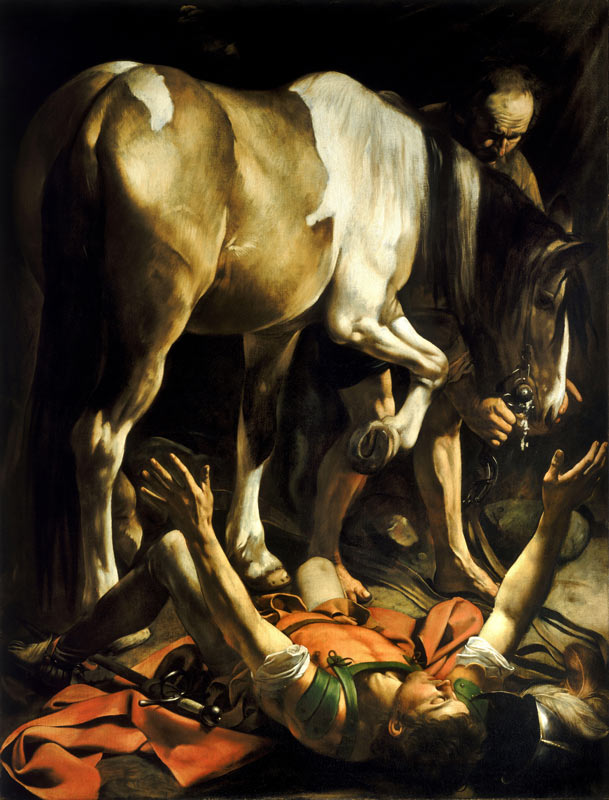
Santa Maria del Popolo (Church of St. Mary of the People)
Created in 1601, this painting captures the moment when Saul, who later took the name Paul, converted to Christianity, a testimony of the redemptive love of Jesus Christ, as recorded in Acts 9:3-6:
Now as he went on his way, he approached Damascus, and suddenly a light from heaven shone around him. And falling to the ground, he heard a voice saying to him, “Saul, Saul, why are you persecuting me?” And he said, “Who are you, Lord?” And he said, “I am Jesus, whom you are persecuting. But rise and enter the city, and you will be told what you are to do.
The Holy Bible: English Standard Version (Wheaton, IL: Crossway Bibles, 2016), Ac 9:3–6.
9. Crucifixion of Saint Peter
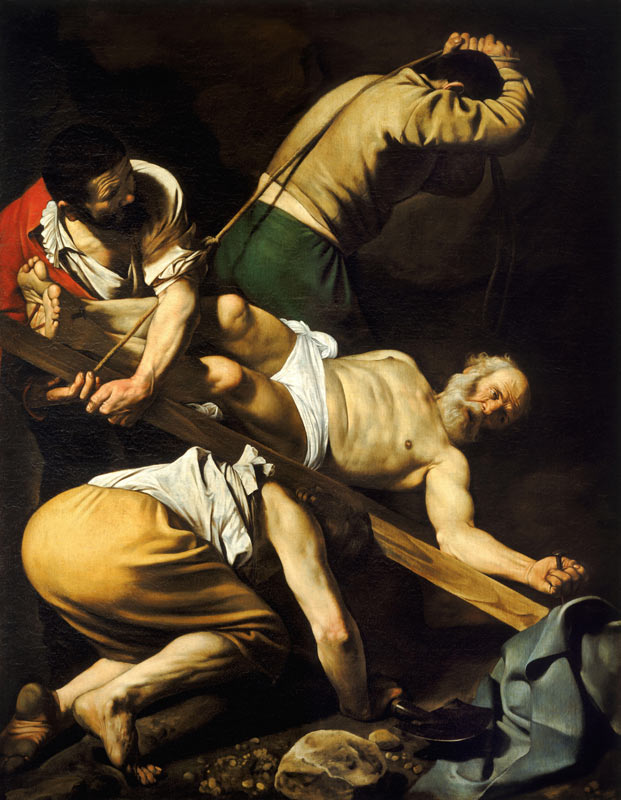
Santa Maria del Popolo
Painted in 1601, this work portrays the crucifixion of St. Peter. Peter requested his cross hang upside down so as not to mimic the crucifixion of Jesus.
10. The Entombment of Christ

Vatican Museum
This painting depicts what followed after Jesus’ death by crucifixion: Joseph of Arimathea requested Jesus’ body from Pilate. Once received, he and Nicodemus wrapped the body in a linen cloth and laid it in a tomb. Later, the Pharisees went to Pilate, requesting a guard for the tomb, lest someone steal Jesus’ body. Matthew 27:66 says they “made the tomb secure by putting a seal on the stone and posting the guard.”
These New Testament paintings by Michelangelo Merisi da Caravaggio beautifully depict some of the most important points in history.
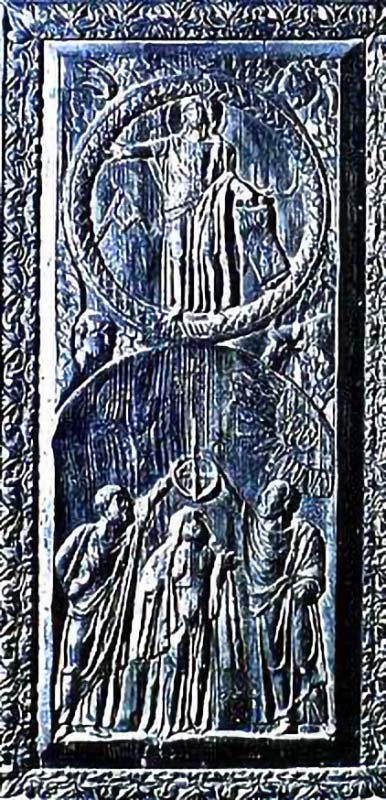
Early Biblical Art Pieces Worth Mentioning
We may visit some earlier art pieces on our Christian Bible study tours of Rome such as the first known use of Christ’s crucifixion in biblical art.
The Apostles and early converts focused on the resurrection so much that the cross was not used in the Early Church until around 430AD. A nondescript church in Rome shows the first use of the cross, which we may visit to see first-hand. The church was originally built in about 430AD at the site of Sabina’s home, a woman beheaded when she accepted Christ as her personal savior. The doors are original depictions of Bible stories from this time.
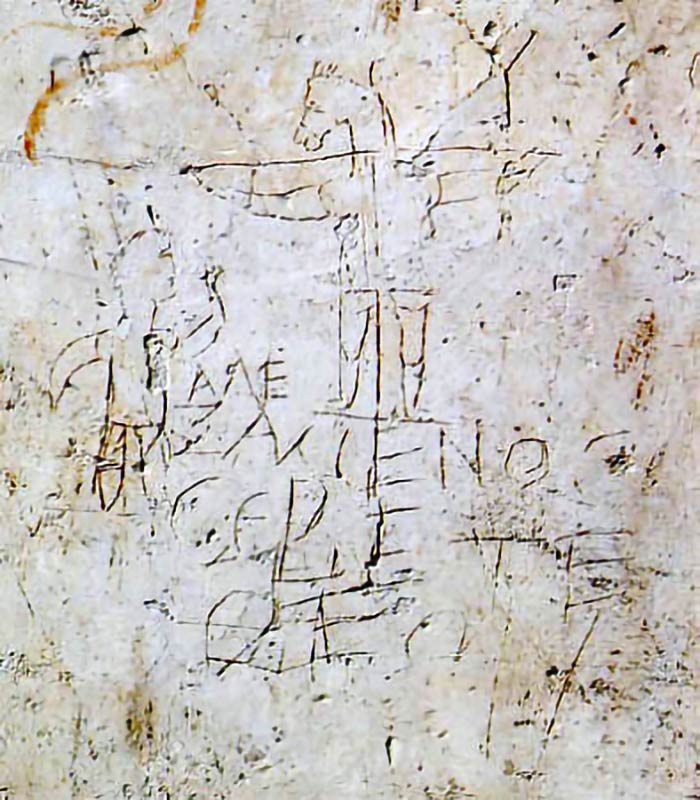
Another early piece of biblical art is graffiti of a crucifixion which is thought to be of Christ. The graffiti criticizes the Christian converts by depicting a man worshipping a donkey hung on a cross. The image documents that Rome had many Christian worshippers by this time, and this piece carries much significance to common attitudes at that time.
These and so many other commemorations of the Bible await your exploration in Rome. Reserve your spot on one of our Christian cruises and Bible study tours.



